Heathrow Airport, formerly known as London Airport (until 1966), is located 14 miles (23 kilometers) west of central London, England.
Heathrow Airport is one of the busiest airports in the world in terms of international passenger traffic. In 2019, it handled a record 80.8 million passengers, an increase of 0.9% compared to 2018, and the number of aircraft movements was 475,861, a decrease of 1,743 compared to 2018. The airport facility is owned and operated by Heathrow Airport Holdings.
Heathrow Airport has two parallel east-west runways and four operating terminals, covering an area of 12.27 square kilometers (4.74 square miles). The airport is the main hub of British Airways and the main operating base of Virgin Atlantic,
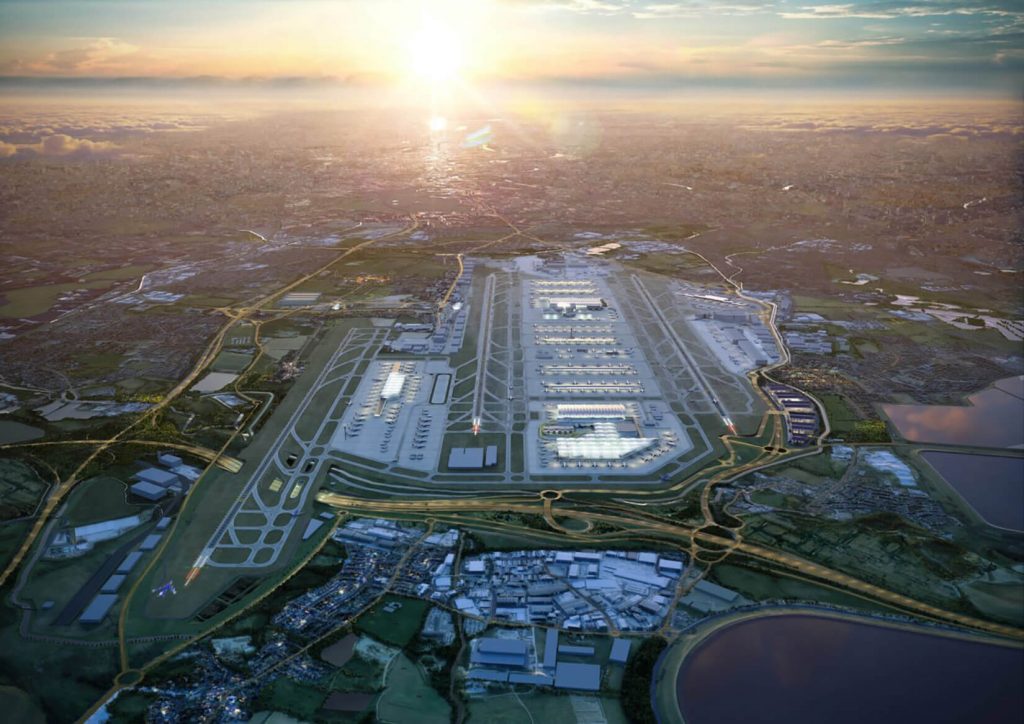
History
- Heathrow Airport was founded in 1929. It was originally a small airport (Great West Aerodrome) southeast of the small village of Heathrow, from which the airport got its name.
- In 1944, Heathrow Airport developed into a larger airport. It is said that this was designed for long-distance military aircraft flying to the Far East; when the airport was about to be completed, World War II had ended, and the British government continued to develop the airport into a civilian airport.
- On March 25, 1946, the airport was opened as a London airport and was renamed Heathrow Airport in 1966.
- In the 1950s, Heathrow had six runways, and its two runways will always be located within 30° of the wind direction.
- In 1955, the first Terminal 2 opened, which is the oldest terminal in the airport. It has an area of 49,654 m² (534,470 square feet) and is designed to accommodate approximately 1.2 million passengers per year. A total of 316 million passengers passed through the terminal during its lifetime.
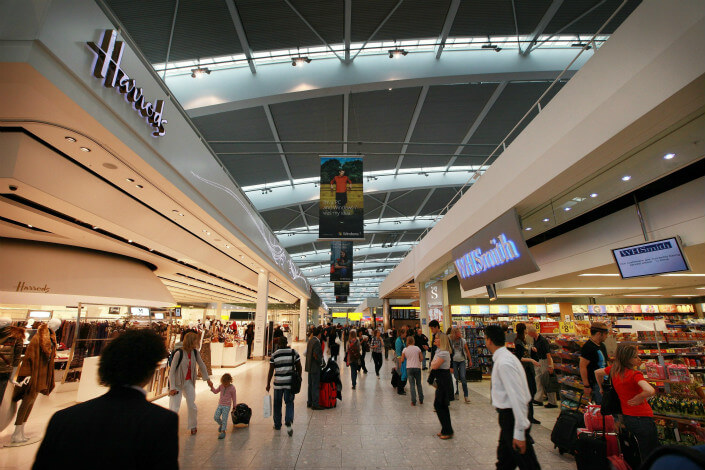
- On November 13, 1961, the airport’s Marine Terminal 3 opened.
- In 1986, Terminal 4 was opened, located on the southern part of the southern runway, adjacent to the cargo terminal, and connected to Terminals 2 and 3 through the Heathrow cargo tunnel.
- In September 2002, construction began on Terminal 5, which cost 4.5 billion pounds.
- In 2006, the construction of Pier 6, costing 105 million pounds, was completed to accommodate the Airbus A380 ultra-large passenger aircraft.
On March 14, 2008, Terminal 5 opened and Queen Elizabeth II attended the opening ceremony. - In 2010, the old Building No. 2 and Queen Building were demolished.
- In November 2013, construction of the new Queen’s Terminal Building No. 2 began, which opened on June 4, 2014.
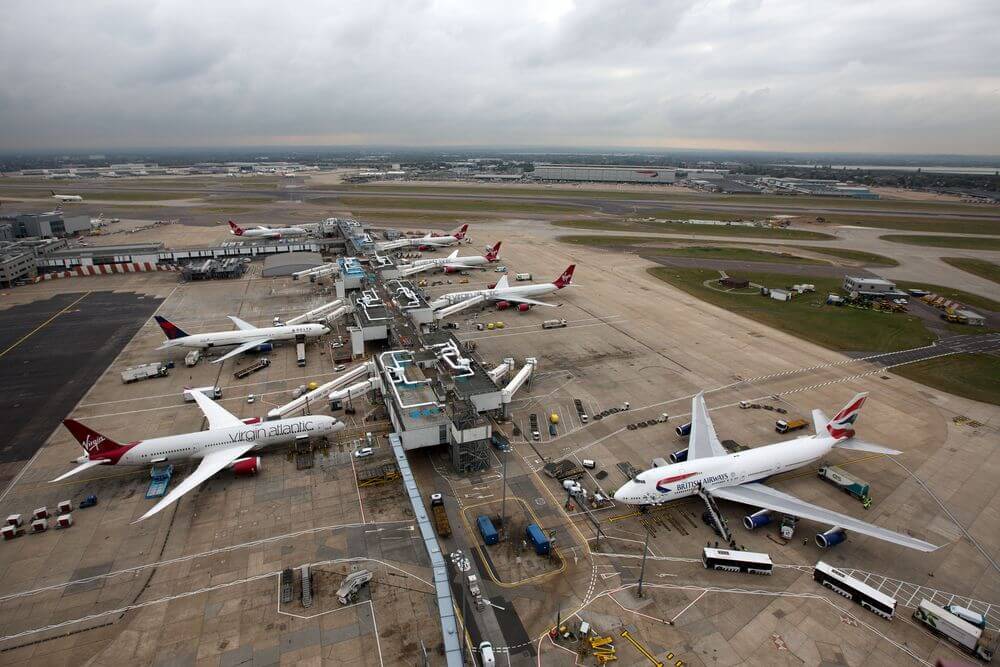
Terminals
Heathrow Airport is used by more than 80 airlines and flies to 185 destinations in 84 countries. The airport is the main hub of British Airways and the base of Virgin Atlantic.
Heathrow Airport has 4 terminals (numbered 2 to 5) and 1 cargo terminal.
Terminal 2
The latest terminal of the airport, officially known as the Queen’s Terminal, opened on June 4, 2014.
The main building was completed in November 2013 and opened to passengers after six months of testing. It includes a satellite terminal (T2B), a 1,340-space parking lot, an energy center and a cooling station that produces chilled water. There are 52 shops and 17 bars and restaurants.
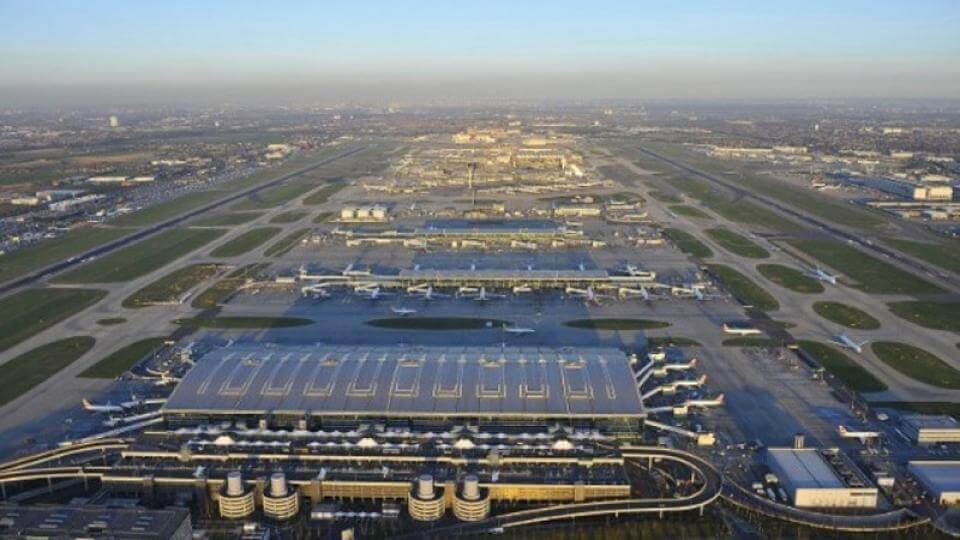
Terminal 3
Terminal 3 was opened as a marine terminal on November 13, 1961. It was renamed Terminal 3 in 1968, and was expanded in 1970, adding an arrival building. Other facilities added include the first moving walk in the UK.
In 2006, the construction of Pier 6, costing 105 million pounds, was completed to accommodate the Airbus A380 ultra-large passenger aircraft.
The area of Terminal 3 is 98,962 m² (1,065,220 square feet). In 2011, it received 19.8 million passengers on 104,100 flights.
Terminal 4
Terminal 4 opened in 1986. The area of the terminal is 105,481 m² (1,135,390 square feet).
It has undergone a £200 million upgrade to enable it to accommodate 45 airlines and provides an upgraded vestibule to reduce traffic congestion and improve safety. It has a refurbished terminal and lounge, a new baggage system, and two new stands have been built to accommodate the Airbus A380.
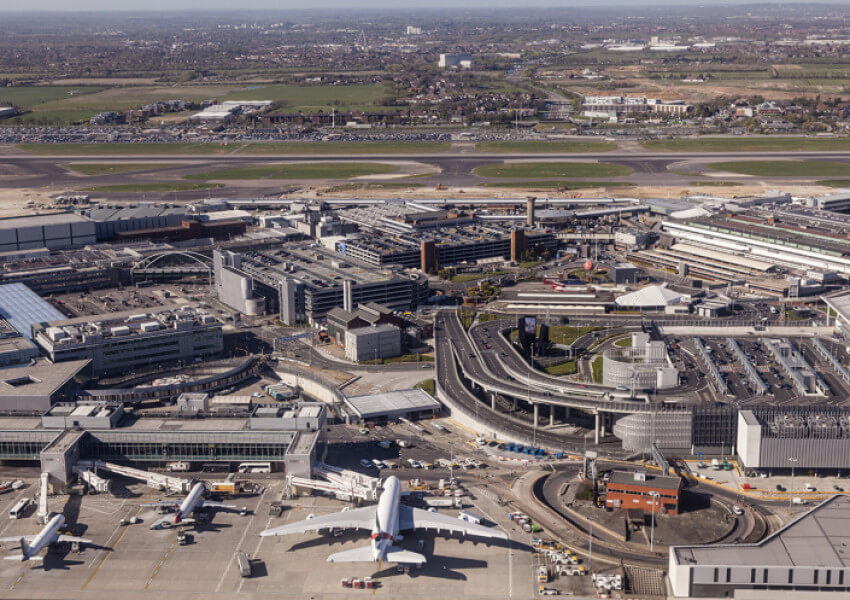
Terminal 5
Terminal 5 is located between the north and south runways at the western end of Heathrow Airport. It was opened by Queen Elizabeth II on March 14, 2008.
The terminal cost 4.3 billion pounds and consists of a four-story main terminal (Concourse A) and two satellite buildings connected to the main terminal through an underground personnel transportation system.
The first satellite hall (Terminal B) includes dedicated booths for BA and Iberian wide-body fleets, except for Airbus A380, and the second satellite hall (Terminal C) includes dedicated aircraft for A380 Bracket.
It was fully operational on June 1, 2011. Terminal 5 was selected as the best airport terminal in the world by Skytrax in 2014 in the World Airport Awards of the year.
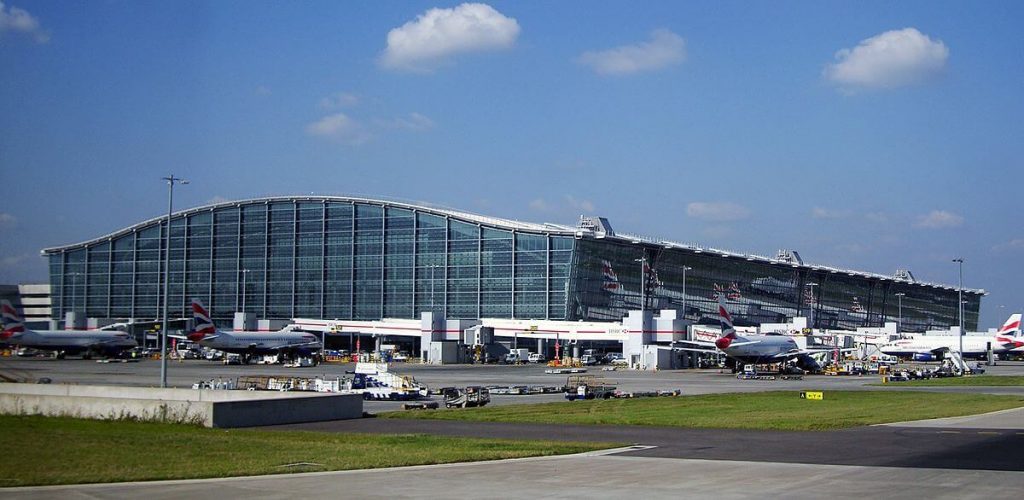
The main terminal (Concourse A) has an area of 300,000 square meters (3.2 million square feet), while Concourse B has an area of 60,000 square meters (650,000 square feet).
It has 60 aircraft booths, can accommodate 30 million passengers each year, and more than 100 shops and restaurants. It is also home to British Airways’ flagship lounge, Concorde Hall, and four other British Airways brand lounges.
The terminal has 3,800 spaces of multi-storey parking. Through the Heathrow Pod, a personal rapid transportation system, a long-term parking lot for business travelers is connected to the terminal building. In the terminal building, there is an Automated Sidewalk (APM) system called Transit, which is used to transport passengers between satellite buildings.
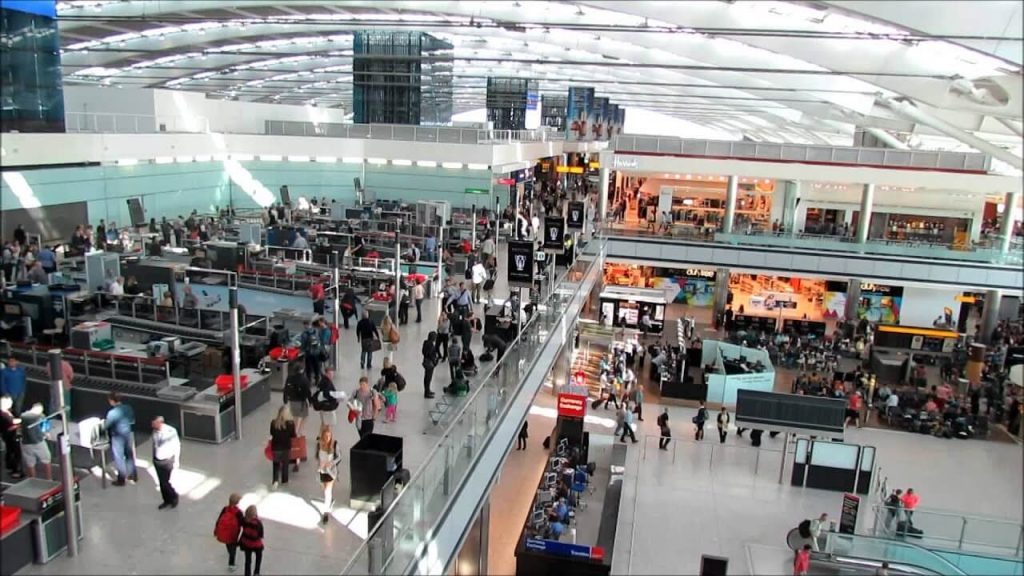
Heathrow Airport Data
- Country
- England
- Region
- North Europe
- Status
- In use
- Other name
- London Airport, London Heathrow
- Location
- Hillingdon, Greater London, England, UK
- Owner
- Heathrow Airport Holdings
- Official website
- heathrow.com
- Operator
- Heathrow Airport Limited
- Began
- 1929
- Opened
- Mar-25 1946
- Airport type
- Public
- Airport code
- IATA: LHRICAO: EGLLWMO: 03772
- Airport area
- 3032 acres / 12.27 km²
- Runway length
- 1*3,902 m,1*3,660 m
- Passenger traffic
- 80.84 million(2019)
- Takeoffs and landings
- 475,861 sorties
View Heathrow Airport on Google Satellite Map
Google satellite maps allow you to see building details more clearly, including natural landscapes such as mountains, rivers, deserts, sea and man-made engineering buildings.
If you are very interested in this engineering building, it is a good idea to click below Google Map icon. We will help you jump to the corresponding location of this building or engineering on Google satellite map.




























































